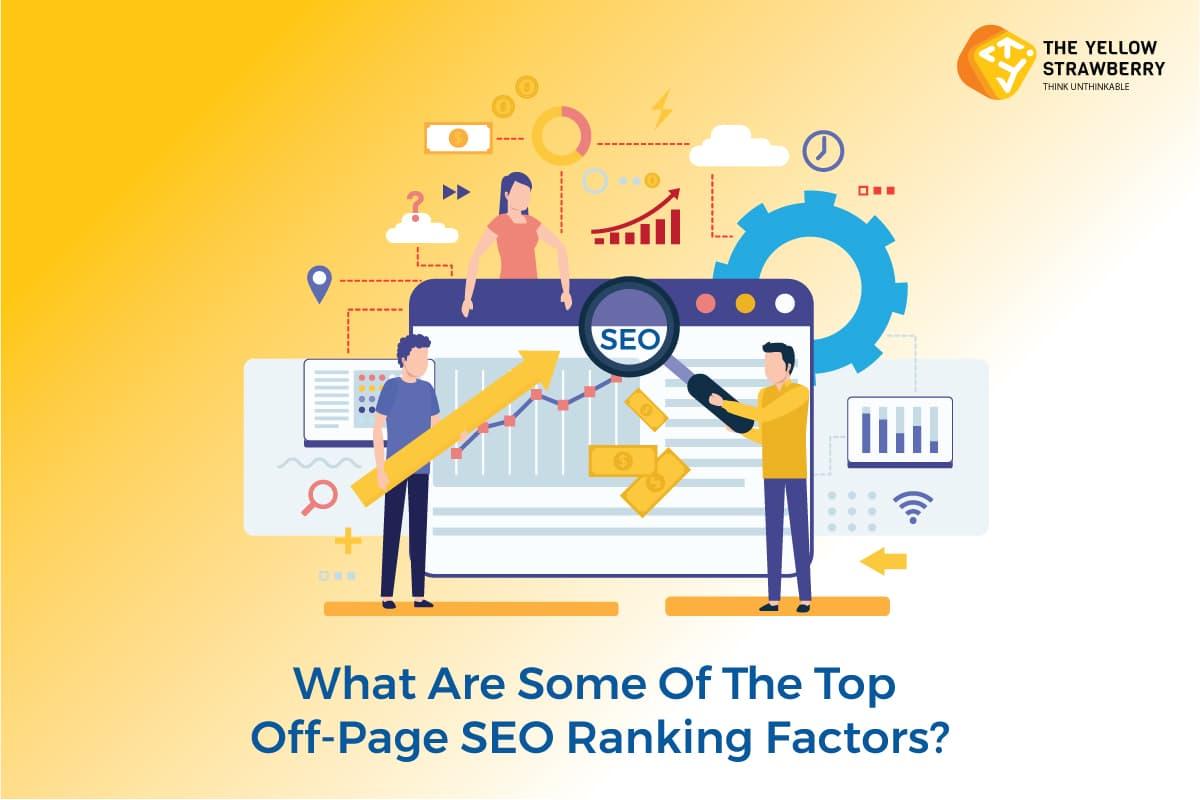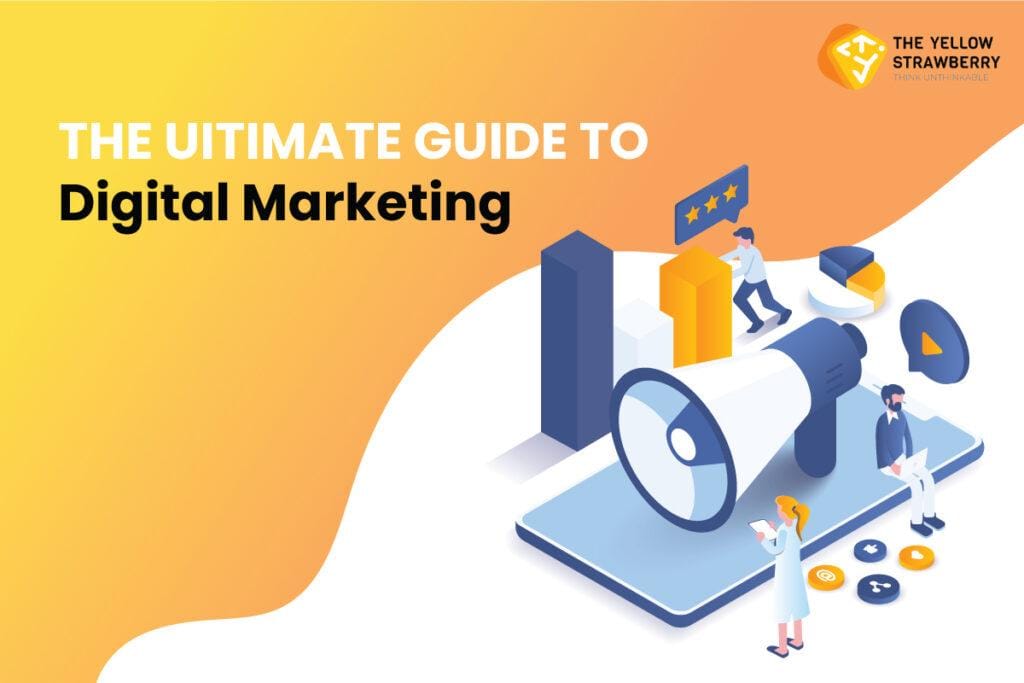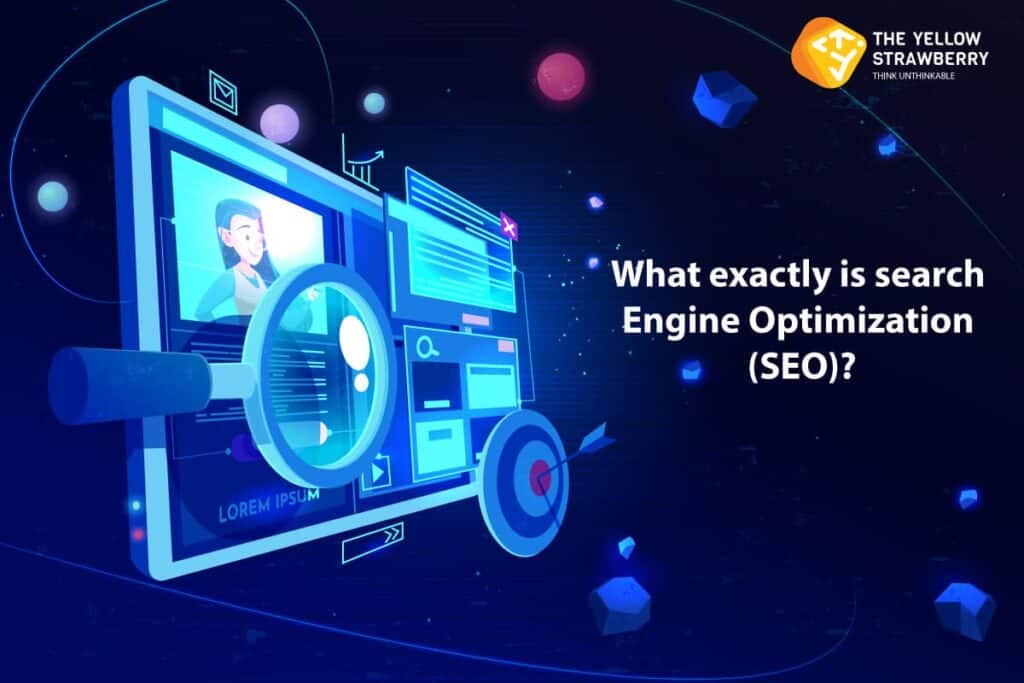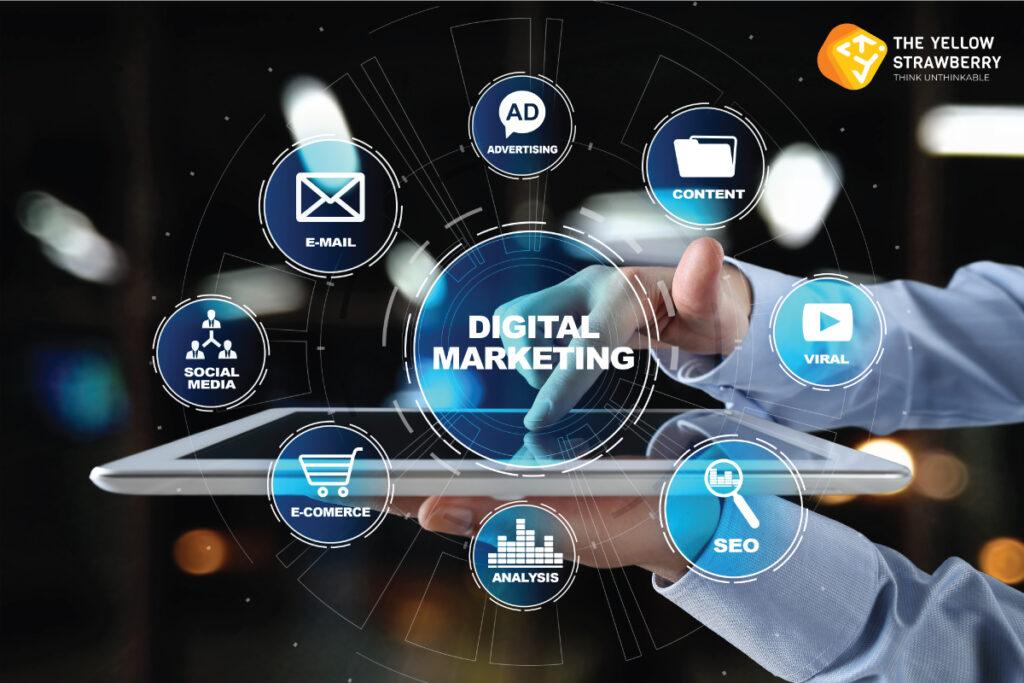It’s difficult to distinguish between marketing communications and off-page SEO.
An example: Influencer marketing can increase brand mentions or backlinks (both of which are well-known off-page ranking factors). Does that mean an SEO specialist should be responsible for it?The short answer is no. If “off-page”, means everything, it doesn’t mean anything.
This article is a little different from your average off-page SEO article which lists every marketing communication tactic in the past decade as an “off-page technique”.
We’ll instead focus on the few known and direct off-page factors that every SEO professional should have, regardless of how they are influenced.
Off-page SEO requires a more comprehensive, holistic approach to SEO. It should not be a single strategy.
Your SEO strategy can be made or broken by knowing where these boundaries are.
What is Off-Page SEO?
Off-page SEO, also known as off-site SEO, refers to all search engine optimization strategies and tactics that you use to improve your rankings. However, they are not within your domain.
Keyword: outside.
Off-page optimization, unlike on-page SEO, which aims to improve SERP rankings through optimizing content within your website’s pages. Instead, it aims to improve your SERP ranking by optimizing factors beyond your domain.
There are many factors that can increase your rankings. These include acquiring quality backlinks and increasing brand mentions.
What is the difference between on-page and off-page search engine optimization?
Relevance vs. authority.
On-page SEO makes your content more accessible, easier to crawl, and easier to index. Off-page SEO builds your website into a topical authority on the subject matter you are writing about.
Why?
Google wants to be able to say two things clearly
Is the web page’s content compatible with the search intent of the person searching for it? (On-page/Relevance)
If we refer visitors to you, are you credible as a source of information? (Off-page/Authority)
It is not surprising that on-page and offline require two different approaches using very different tactics.
If the website publishing the content has little trust and authority, it is unlikely that it will rank highly on Google search. It won’t rank high on Google search if it is competing with websites with higher domain authority.
Off-page SEO is responsible for domain authority (trustworthiness and relevance, authority).
According to a Moz survey, which asked SEO experts how important certain tactics are to ranking, over half of all ranking factors were off-page.
Ranking factors off-page
- Number of Referring Domains: A major and important ranking factor in off-page SEO is the amount of referring domains, which is the number of websites linking to your site. Google as well as other engines see each domain that refers to your site as a sign of trust on your site. If you get more votes, the higher your chances to be ranked high on SERPs. But, it’s not just the amount of referring domains that matter however, the quality is equally crucial. A link that comes from a top-quality website that’s relevant to your field for example, an article or Guest blog post link will have more weight and SEO significance over a link from an unprofessional website.
- Link Authority: Another key ranking element in Off-page SEO includes link building authority. It evaluates how good a web site is in relation to factors like popularity, age and the number of links from other websites. A site with a lot of linking activity has a higher chance to be highly ranked in the SERPs than one that has a low link authority, and no indication of SEO or guest posts for creating high-quality links.
- Anchor Text: Anchor text refers to the words or phrases that are connected to a website. It is crucial for off-page SEO as it provides Google an impression of what the linked-to site is about. Utilizing pertinent keywords as anchors will assist in boosting your rank for the keywords you are targeting. For instance, if you have a website that is about plumbing and plumbing, including the anchor text “plumbing” in links to your site will aid you in achieving higher ranking on Google for the keyword.
- Link Relevancy: Link relevancy is an additional element in off-page SEO. Google examines the content on websites which link to yours in order to determine whether those backlinks are appropriate. If your website is on plumbing and receives the natural link from a website that is about cooking, that backlink may not be as relevant as a link that comes from a plumbing site. Google looks at hyperlinks from relevant websites to be crucial when determining the worth your site can provide to users.
- Social Shares: The most significant off-page SEO elements are engaging with social media. This is everything from how frequently your content is shared via social media marketing platforms to your post levels of engagement (likes comments, likes.). Google as well as other major search engines put an emphasis on social media engagement since it’s a good indicator of content that is high quality. If users regularly share and respond to your content via social media, that’s evidence that they find the content valuable and worth reading. This is a signal to Google it is more likely to be of high-quality in addition, which can assist in improving your search engine ranking on Google.
The SEO community agrees that there are off-page SEO ranking elements that reflect Google’s actual ranking factors. There are also off-page SEO techniques which can positively impact those ranking factors.
SEO experts often confuse the two.
Social media marketing, for example, is not an off-page SEO. However, sharing content via social media can indirectly result in improved rankings. More shares can lead to higher organic traffic and more backlinks.
As we said in the introduction, this article will focus on the off-page factors that every SEO manager and webmaster must know. Not the endless number of tactics that can influence these factors, but those that might or may not be part of the SEO department.
What are they?
-
Backlinks
-
Brand signals
-
Local SEO factors
-
1. Backlinks
Backlinks are links linking from another domain to yours, not internal links that link to one page within your domain. Google and other search engines use backlinks to show their trust: If a trusted website links to yours then it is likely that you are also reputable.
According to Moz, page-level and domain-level backlinks carry 21% and 19.2% respectively of the ranking weight. Backlinks together make up 40% in ranking factors.
What does a good backlink profile look exactly like?
Quality links are not just links from any website, but links that come from websites with high domain authority (DA). A link from YouTube (DA 100), for example, will help you rank higher than a random link (DA 14).
Anchor text: The text portion of a hyperlink is called anchor text (e.g. This is anchor text. Google stated that anchor text is used to determine the context and relevancy of the pages it links to. This is something you can’t control, but anchor text keywords may increase the link’s value.
Backlinks that bring qualified traffic: rankings are not everything. Links that bring referral traffic to your site should be considered. Google may also consider links that send referral traffic as more valuable.
Relevance: A link from a pet food site is more valuable than one from an auto repair website if you are a veterinarian.
Dofollow: Links are “dofollow” by search engines. This means that search engines can follow them and pass on link juice. Some links may be “nofollow,” meaning search engines won’t follow them and don’t pass on link juice. Dofollow is what you want.
-
2. Brand mentions
Brand mentions can be any online instance of your brand name being mentioned in a linkless manner, such as an article, case study, social media, or within a forum.
What contribution do brand mentions make to rankings?
Although it’s difficult to know for sure, we are certain they exist.
We know that unlinked mentions are important thanks to Google patents, Google Search Quality Guidelines, Gary Illyes from Google and Duane Forrester, former Bing employees.
Bad news: You have very little control over the people who mention you and when. Brand metrics can be difficult to track.
How can you increase brand mentions?
These are great ways to increase brand mentions. How many of these fall under the SEO umbrella?
It all depends.
It could be any of the above or none depending on the business.
Whatever your choice, here are the essentials that every SEO must bring to the brand-building conversation.
-
Reach
You need to reach more people, no matter how many off-page strategies you use, to increase brand mentions. This means maximizing reach. Prioritize the opportunities that will get you and your view in front of as many people as possible.
-
Spheres Of Influence
You need to have other industry influencers talking about your brand in order to increase brand mentions. Customers can only do so many things (e.g. Leave reviews. Each SEO should play a part in creating a network of influencers within your industry. This could be individuals, blogs, thought leaders, disruptors, thought-leaders, and businesses.
-
Universal message
Your influencers need something to share with their audiences. No matter what medium you use to communicate that message, articles, thought leadership or podcasts, it doesn’t really matter. Every brand-building program must have a universal message that appeals to buyers, non-buyers and future buyers. SEO should definitely have a voice in the development of that message.
-
3. Local SEO factors
Local SEO is search engine optimization that targets local businesses.
Three things are different about local SEO than regular SEO when it comes to off-page optimization.
-
Google My Business (GMB).
-
Citations
-
Review
Whitespark claims that GMB, reviews and citations account for 56% and 19% respectively of total ranking variables for Local Pack results, respectively.
Google My Business
Google My Business is Google’s business hub for local companies.
Google will provide a free business profile for customers if you have in-person contact. You can edit this profile and make changes to ensure that your business information is accurate in search results.
Local intent queries (i.e. Google lists GMB listings for queries with local intent (e.g. “dentist near my”) in three places.
-
Results for Map
-
Knowledge Panel
-
Results from the Local Pack (also known as "Snack Pack")
GMB profile completeness
Each field must be filled in (images, business hours and business category, about, etc.). It all.
Keywords in GMB title
This is something you can’t control. Your business name should be your title, regardless of whether it is keyword rich. If possible, include your category descriptor (e.g. “KlientBoost SEO Agency”
Primary category for GMB profile
There are many categories, and they might not be the right one for you. Find the closest one.
Secondary categories of GMB Profile
As many related categories are possible
Verified/claimed GMB listing
Verify your GMB page and claim it, every time. You can edit your information and manage it once you have verified.
Keywords in GMB landing pages title
In this instance, the landing page is your homepage or local page. It should be optimized for your brand + city.
Page authority for GMB landing page URL
Your GMB page can be linked to any other page on your site. Consider your homepage as the most authoritative page on your website.
GMB profile: Local area code
Google uses location to provide local results. An area code is used by Google to determine the location of a GMB listing.
Inbound links to GMB landing pages are of high quality and authority.
The world is ruled by links, even your GMB rankings.
Quantity of GMB reviews
Find more reviews from Google native users
-
Citations (NAP consistency).
Local citations are a mention of your name and address (NAP) anywhere on the internet, such as on a local business directory or industry-specific websites, social media, or apps.
This is an example of a citation that a Newport Beach plastic surgeon has submitted to RealSelf, a niche directory.
Three things are most important when it comes to citations:
-
Accuracy
It is important that your name, address and phone number (NAP), appear consistent across all your citations. NAP consistency is used by search engines to rank local businesses. Search engines will assume that your business information is inconsistent. This could lead to poor local rankings. Customers can also be confused by inaccurate information about your business.
-
Qualitative
Not all citations are equal, just like backlinks. A citation on Google, Facebook, or Yelp can be more valuable than one on a random site with low domain authority. A citation that is industry-specific will be more valuable than a citation that is not.
-
Quantity
Volume of citations is the last. Just as backlink volume builds trust with Google. Citation quantity also builds trust. Google will be more confident in your business if you have more accurate NAP.
-
Off-page SEO strategies
Once you have a better understanding of the off-page ranking factors that matter most, you can begin to look at how marketing communications can impact them.
The most popular off-page strategies include:
-
Distribution and marketing of content
-
Marketing via social media
-
Marketing to Influencers
-
Guest blogging
-
Distribution of press releases (meh).
-
Link building (broken link building, linkable assets, etc.)
-
Brand building
-
Content syndication
-
PR
There are many other options.
It’s not your responsibility to implement all these strategies, even if they have an impact on a few metrics. It is your responsibility to communicate these off-page ranking factors with anyone who may inadvertently be affected.
Wrapping up
It is clear that even though off-page SEO can be affected by almost every marketing communication tactic, it is a result of good marketing and not a list of tactics that you do in a silo.
SEO: Where does it all stop?
What should SEO do if every marketing communication tactic has an off-page influence?
I hope this article clarified one thing: regardless of the tactics used to influence off-page rankings factors, it is the job of the SEO specialist to advocate those factors for the entire marketing department.
Use of Apple Watch
The watch apps depend on the particular specifics of the user. The maker wants a whole new mindset when making an Apple watch. The watch provides multiple features to the user, for instance:
-
Health Tracker
-
Quick access to details
-
Action rings for regular activities
-
Complete iPhone pairing
-
Complexity is low
In terms of the number of displays, types of users, and the use of sensors, small complexity apps are usually low. Mobile applications typically take between 100-300 hours to build with low complexity.








